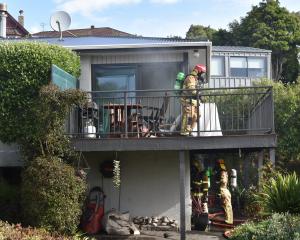Associate Prof Mike Hilton, of the University of Otago, said the direction of sediment transport, the extent of wave energy at St Clair and the location of the seawall were among reasons why lines of poles known as a groyne would be ineffective.
"Groynes work on certain types of coast and this is not that type of coast," Prof Hilton said.
A line of poles that were the remnant of a groyne had featured in paintings, photographs and postcards and a discussion about artistic merit could be worthwhile, he said.
"If we wish to replace the poles for aesthetic purposes, I have some sympathy," he said.
"But the argument that a replacement groyne will result in sand deposition and reduced pressure on the shoreline, particularly the seawall and the geotextile bags, is weak."
That argument is set to be had at a Dunedin City Council meeting today after new Mayor Jules Radich filed a notice of motion requesting an urgent report on the cost and timeframes for reinstating the St Clair groyne, potentially on a trial basis.
Five councillors signed the notice.

Mr Radich has consistently argued historical evidence shows groynes have been effective in building up the beach since early in the 20th century.
They became ineffective when allowed to fall into disrepair, he has said.
Groynes also had their critics a century ago.
Prof Hilton highlighted letters to the Evening Star in 1920 and 1921, where correspondents criticised their installation at St Clair.
One problem now is the seawall gets a battering where it is located.
He said the city would continue to pay high maintenance fees for as long as the seawall and geotextile tubes were in frequent contact with the ocean.
Ratepayers might be prepared to wear the cost, given the amenity value at St Clair and desire to access and use the beach, he said.
"But adding a new structure, a groyne, that will almost certainly not work, would not be a prudent decision and would impose even higher costs on future generations."












